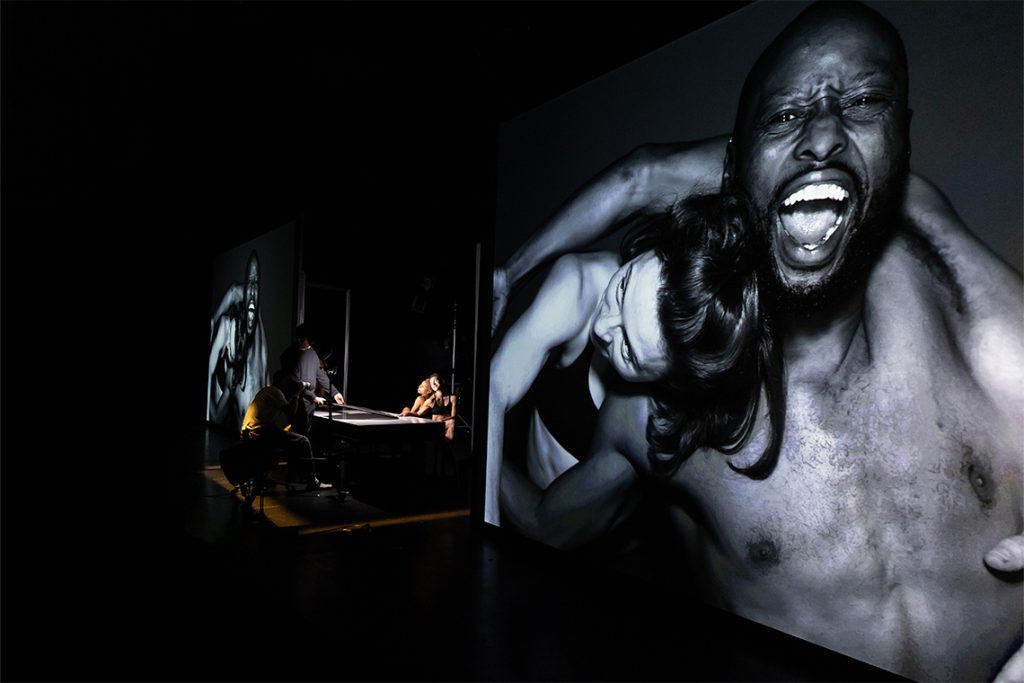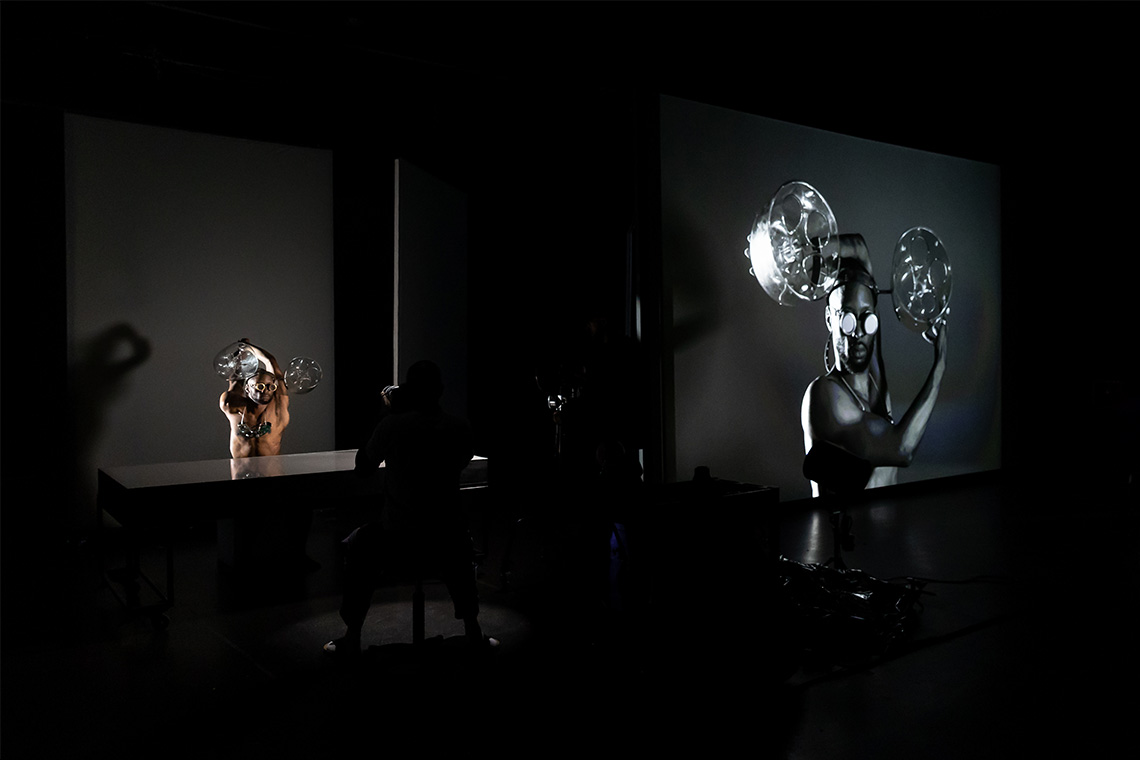Blending photography, dance and theatre, Benji Reid invites audiences to slow down, look closer and reconsider what it truly means to see in his performance, Find Your Eyes.
Dance Reflections, by Van Cleef and Arpels has quietly settled into an essential role among present-day works of performance, cementing trust among artists willing to exceed limits not because they are daring but because they are inevitable. Supporting these creators, the initiative cultivates a landscape where shiny aesthetics yield to quietly audacious thinking, where every body and story ground rehearsed gestures into currencies for all communities. By consistently curating these wordless rebellions, Dance Reflections has created space in which people are invited to wrestle with the sheer breadth of dance, its capacity to hold sweat, sorrow and joy all at once.
Into this setting comes Find Your Eyes, the 11th season opener at The Arts NYU Abu Dhabi, a performance by British visual and movement theatre maker Benji Reid, whose work defies categorisation. Born from the intersection of street culture and fine art, his practice has evolved into something unique, a fusion of photography, choreography and theoretical storytelling that creates compelling stage images in real time. Reid’s background as a pioneer of hip-hop theatre and an award-winning photographer provides him with a rare dual perspective on artistic expression. Beginning his journey in Manchester’s underground theatre spaces in the mid-1990s, he refitted classic dramaturgy with the pulse of breakbeat, rewriting what stages could carry and what bodies could risk. When the footlights dimmed, he picked up a camera and began to pursue a different choreography; where footfalls and freestyling had once flexed the body toward risk, the shutter now flexed the light toward revelation, allowing him to freeze that exact heartbeat of truth that sizzled just after the thrill and just before the still.

This shift is the basis of Find Your Eyes, presenting the culmination of Reid’s artistic journey. The performance is drawn openly from Reid’s own life experiences, translating memory into movement. Fragility, loss and resilience become interchangeable threads that weave together autobiography and cultural critique. What distinguishes Find Your Eyes from conventional performances is its synthesis of live image-making and choreographed bodies into a single, fluid mode of expression. Reid forges the two into a hybrid that is neither dance nor fixed image, but a co-authored present. Photographers and dancers co-respond in the same shimmering moment, producing a new and immediate image that dissolves the moment after it forms. The stage is repurposed into a living lens and spontaneous darkroom, where the act of making is revealed in the same moment that the audience witnesses it. By exposing the process, Reid fractures the façade of seamless performance that haunts both the theatre and the still photograph. Audiences observe the missed cues and spontaneous corrections, flaws usually buried beneath gloss. This willingness to expose the mechanics of creation allows viewers to connect with the work on multiple levels – visually, emotionally and conceptually.
Reid’s exploration of the Black British experience, particularly his focus on Black masculinity and mental health, brings urgently relevant themes to Abu Dhabi audiences. Instead of theory lifted from books, he offers moments recollected and weighed on the pulse, turning the kitchen-sink drama of race, nation and gender into something closer to household conversation. These investigations gain additional layers of meaning when presented in the Gulf region, where questions of identity and belonging resonate across different cultural contexts.
Find Your Eyes possesses a stillness that forbids itself to hurry. Where screens device-feed us kaleidoscope speed, Reid’s choice offers the opposite: a deliberate pause that invites us to linger, to finish the thought he has given us and to breathe into the in-between. Angle, silhouette and ember light are gestated minute to minute, turning viewers into quiet hosts for observations the eye often overlooks – the twitch of a muscle, a fleeting shadow, an inhalation that could just as easily die unheard. To certain audiences, the memory ejects itself as a visual flare, ribs cracking in impossible angles, silhouettes that fuse the anatomical with something celestial, the whole frame turned into a living sculpture. For others, it is the intimacy of watching an artist work, or the thematic weight, vulnerability as strength and the photograph as both record and transformation. By the final image, Find Your Eyes has created more than a display of Reid’s mastery, it has forged a shared space where artist and audience meet in the act of looking and accept an invitation to sharpen one’s own vision.



